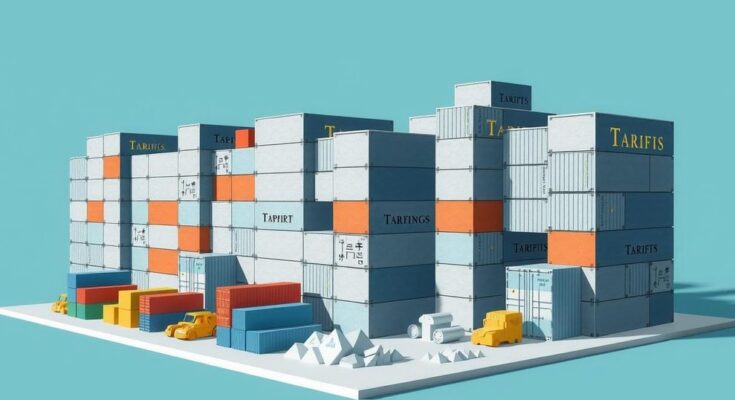Donald Trump has now decided to fulfil his campaign promise to “build that wall”—though not with steel fencing. Instead, he plans to construct a formidable barrier of tariffs aimed at encompassing the entire United States. Delivering a fiery and meandering speech, Trump announced sweeping import taxes ranging from 10% to over 40% for various countries.
While he promised economic “liberation,” the immediate outcome is more likely to see increased prices for American consumers and heightened uncertainty for businesses, potentially intensifying an existing economic slowdown. Countries impacted by these tariffs will suffer based on their export reliance to the US and exposure to the global market. For some nations, the implications could be dire.
The United Kingdom can breathe a sigh of relief with a 10% tariff after Keir Starmer’s diplomatic efforts, while the EU may avoid a maximum of 20%. However, countries like Vietnam and Cambodia face staggering rates of 46% and 49% respectively. The repercussions of such blanket tariffs are complex and hard to forecast, particularly regarding the responses from rival economies where mutual tariffs could exacerbate the situation.
Movement in the dollar’s value might soften the blow on importers, potentially limiting price hikes from increased costs in goods and materials. However, the unpredictability surrounding Trump’s plan only adds to an already unstable economic environment that began with his presidency, rather than signalling its end.
Governments worldwide may retaliate with their tariffs while striving for exemptions, akin to the UK’s hopes for an “economic agreement” that might include concessions for major US tech firms and reduced tariffs on food imports. The extent of Trump’s willingness to negotiate remains uncertain.
Though he enjoys the spectacle of tariffs to gain concessions and present them as victories, some analysts opine that a significant drop in stock prices could prompt a softer approach from him. His press secretary maintains that Wall Street is expected to “be just fine” amidst these changes. Conversely, Trump himself acknowledged the transition might bring turbulence, hinting at the possibility of a recession as part of this shift.
The administration anticipates substantial tariff revenues—projected at an astonishing $600 billion (£460 billion) annually—to fund tax cuts. This ambition contradicts the notion of granting exceptions to major economies. Conforming to demands could also clash with Trump’s aim to incentivise domestic manufacturing under the new tariff regime.
Trade experts have expressed confusion, warning that predicting outcomes post “liberation day” is nearly impossible, which breeds significant uncertainty—a sentiment felt by consumers and businesses alike. Dipping consumer confidence figures reflect this anxiety, compounded by recent mass job losses attributed to tech entrepreneur Elon Musk’s governmental changes.
In executive offices, uncertainty about the tariffs could stymie crucial investments, such as bringing manufacturing jobs back to the US as Trump envisions. The potential for a “Trumpcession” appears increasingly likely rather than the “golden age” he has promised to create.
Donald Trump’s tariff plan aims to build a ‘wall’ of import taxes around the US, with rates varying from 10% to over 40%. This move promises economic ‘liberation,’ but is likely to raise consumer prices and lead to uncertainty for businesses, potentially exacerbating an economic slowdown. Countries will be impacted differently based on their trade ties with the US, with some facing devastating tariffs, while the overall unpredictability raises concerns about future investments and market stability.
In conclusion, Trump’s tariff initiative signals a dramatic shift in US trade policy, with potential economic repercussions both domestically and globally. While some nations may find respite with lower tariffs, others could face hefty rates that devastate their economies. The ensuing uncertainty and consumer apprehension complicate predictions, with a looming possibility of further economic downturn or even recession overshadowing Trump’s ambitious goals for revitalising American manufacturing.
Original Source: www.theguardian.com



